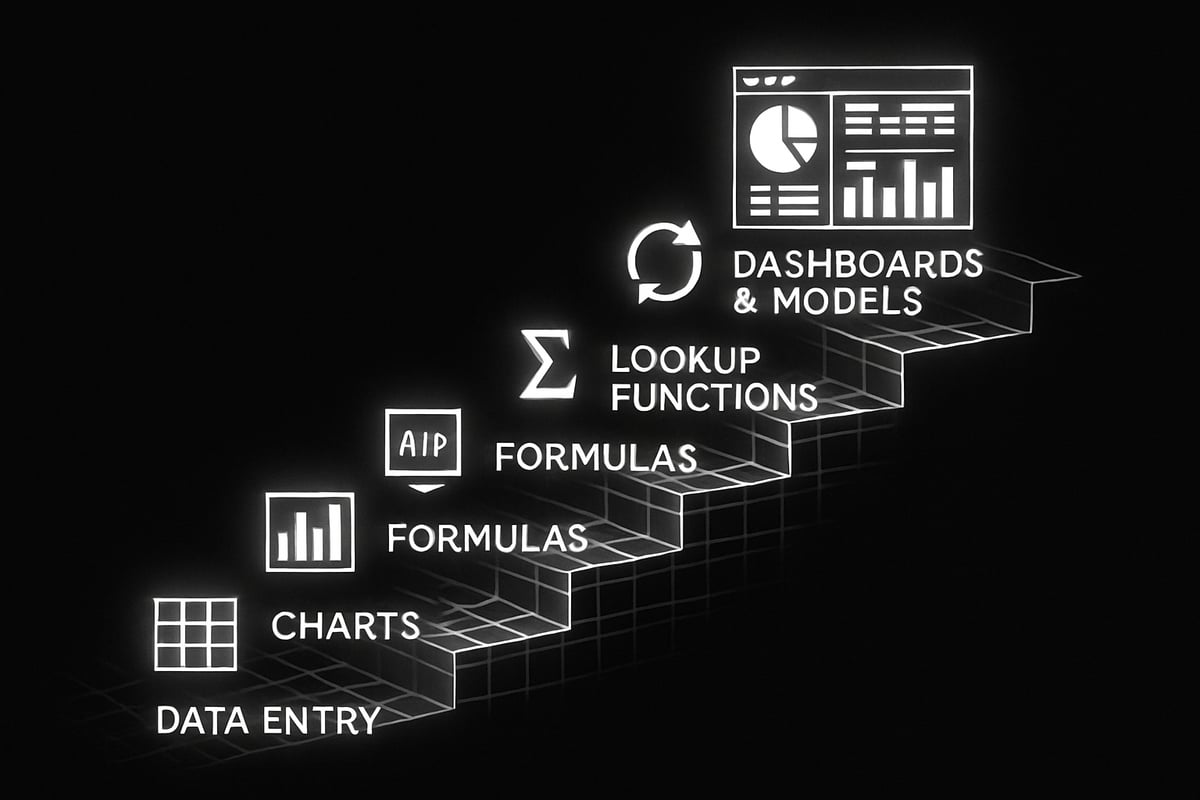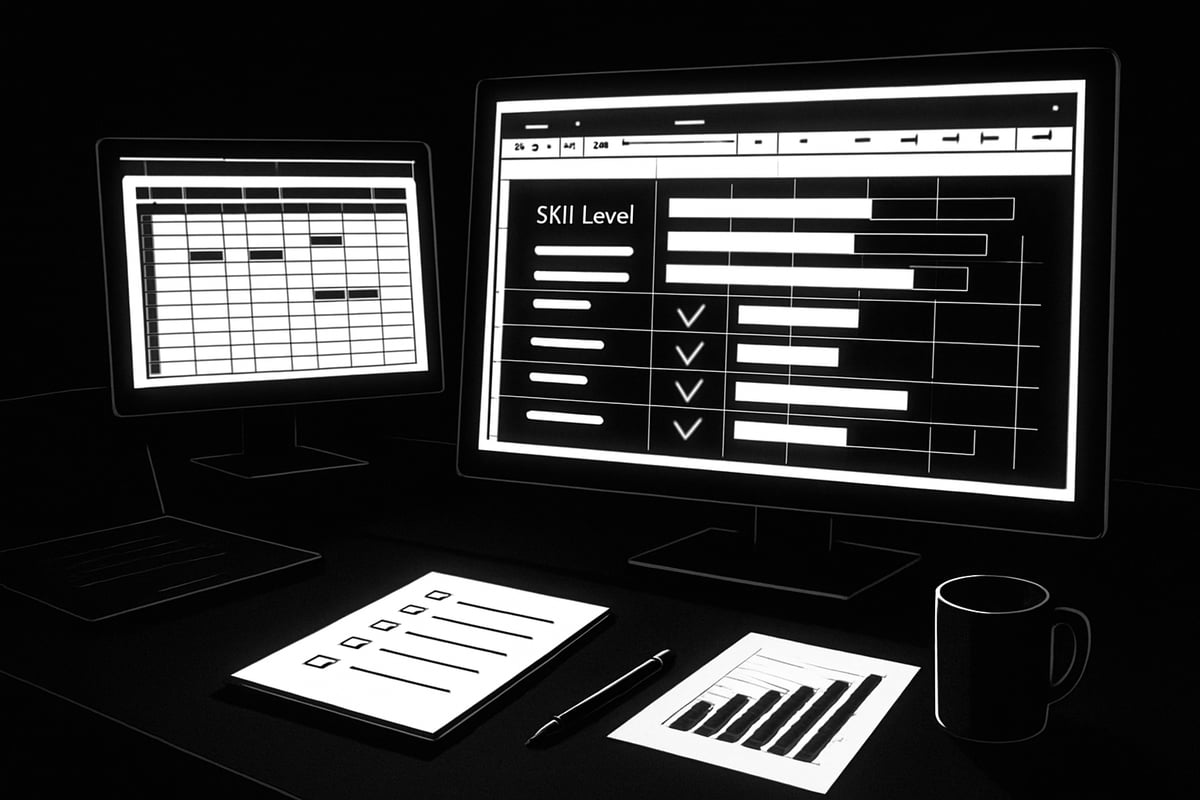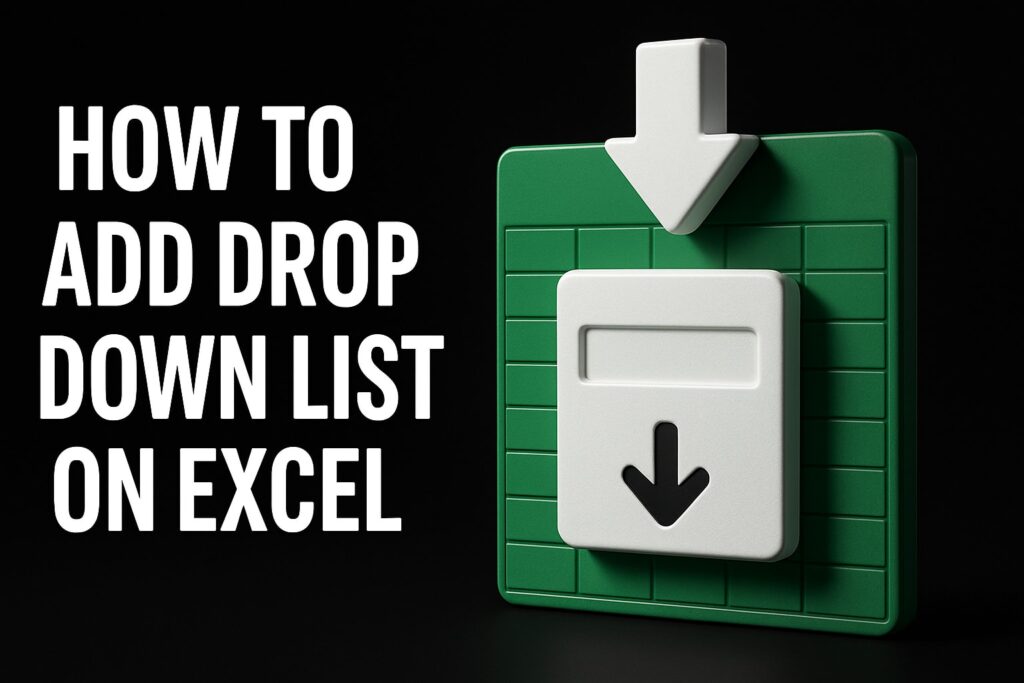Excel is no longer just a spreadsheet tool—it’s the backbone of decision-making in 2025’s data-driven workplaces. With digital transformation accelerating, mastering Excel can set you apart in nearly any industry.
This article is your roadmap to understanding the seven unique excel skills levels. We’ll break down each level, share practical examples, and offer actionable tips so you can pinpoint your current strengths and chart a path to the next stage.
Ready to unlock new career opportunities? Dive in to discover where you stand and how to level up your excel skills levels for the future.
Why Excel Skills Matter in 2025
The Evolving Role of Excel in Modern Workplaces
Excel remains a powerhouse in business, driving analysis, automation, and reporting across every industry. In 2025, its capabilities are more essential than ever, with cloud integration and AI features transforming how organizations handle data.
Recent studies show that over 80% of companies still list Excel as a critical tool for daily operations. Beyond spreadsheets, Excel now connects seamlessly with cloud platforms and business intelligence tools, making it a foundation for digital transformation. Understanding excel skills levels is vital for thriving in these evolving environments.
Career Impact: How Excel Proficiency Boosts Opportunities
Employers are increasingly specific about the excel skills levels they seek. Job postings for analysts, managers, and finance professionals frequently require advanced Excel knowledge, such as PivotTables, complex formulas, and automation techniques.
Data from recent salary surveys reveal that professionals with higher excel skills levels often command up to 20% more in compensation compared to those with only basic proficiency. In fields like financial analysis and project management, advanced Excel is no longer optional—it’s a prerequisite for career advancement.
| Role | Required Excel Skills Levels |
|---|---|
| Data Analyst | Advanced formulas, dashboards |
| Operations Manager | Reporting, automation |
| Finance Manager | Data modeling, forecasting |
The Shift from Basic to Advanced Excel Skills
Modern businesses demand more than just simple data entry or formatting. The bar for excel skills levels has significantly risen, with employers prioritizing candidates who can analyze data, automate workflows, and build interactive dashboards.
Relying solely on basic functions like SUM or simple charts limits your ability to contribute to strategic decisions. Those who invest in mastering advanced skills—such as Power Query, macros, and scenario analysis—gain a distinct competitive edge. Mastery of multiple excel skills levels helps professionals adapt to rapid changes in data-driven workplaces.
Common Challenges in Assessing Excel Skills
Assessing excel skills levels isn’t as straightforward as labeling oneself a beginner, intermediate, or advanced user. Many employers now evaluate candidates based on real-world tasks rather than generic course completions.
This shift can create confusion, as self-assessment often leads to over- or underestimating one’s abilities. Hiring managers may use practical tests or case studies, focusing on how applicants solve problems with Excel. Accurately gauging your excel skills levels requires honest reflection and practical demonstration, not just listing skills on a resume.
7 Excel Skills Levels Explained
Excel is more than just a spreadsheet—it’s a toolbox with layers of capability. Understanding the seven excel skills levels empowers you to pinpoint where you stand and what to master next. Let’s break down these levels, from foundational tasks to advanced data modeling, so you can confidently chart your progression.
1. Data Entry & Navigation
The first of the excel skills levels is all about mastering the basics. At this stage, you’re learning how to input data accurately, navigate worksheets, and apply simple formatting.
Key abilities include:
- Entering and editing data in cells
- Navigating between sheets and workbooks
- Using copy, cut, and paste effectively
- Sorting data and creating simple tables
- Printing worksheets with basic settings
For example, building a contact list or formatting an invoice falls into this category. Administrative and entry-level roles rely heavily on these skills, as clean data entry is the foundation for every other task.
Error prevention is crucial. Small mistakes here can ripple through more advanced stages, so attention to detail matters. This level forms the bedrock of all excel skills levels, making it a prerequisite for every user.
2. Data Presentation & Visualization
Once you’re comfortable with the basics, the next step in the excel skills levels is presenting data clearly and visually. This involves turning raw information into tables and charts that tell a story.
Key skills at this level:
- Creating and formatting tables for clarity
- Using cell styles and themes for consistency
- Building basic bar, line, and pie charts
- Applying conditional formatting (data bars, color scales)
- Highlighting key trends visually
Imagine preparing a sales dashboard or summarizing a budget with eye-catching visuals. These abilities help team leads and project managers communicate data efficiently, making decisions faster and more confidently.
Dynamic visuals, like conditional formatting, add interactivity. As you advance through the excel skills levels, this visual layer becomes a powerful tool for influencing business outcomes.
3. Formula Fundamentals
This stage marks a shift in the excel skills levels from data handling to analysis. Here, you begin harnessing formulas to process and summarize information.
Core formula skills include:
- Using SUM, AVERAGE, COUNT, and IF functions
- Applying text functions like LEFT, RIGHT, and CONCAT
- Mastering cell references (relative and absolute)
- Combining formulas for deeper insights
For instance, you might create an expense tracker with SUMIF or tally attendance using COUNTIF. These formulas are the backbone of data processing and reporting.
Common pitfalls at this level involve reference errors or incorrect formula syntax. Still, overcoming them sets the stage for more advanced excel skills levels, where analysis becomes more powerful and automated.
4. Data Analysis & Lookup Functions
At this point, the excel skills levels evolve into advanced data comparison and cross-referencing. Lookup functions are your best friends for handling large datasets.
Key abilities:
- Using VLOOKUP, XLOOKUP, HLOOKUP, INDEX/MATCH
- Running multi-criteria lookups with SUMIFS, COUNTIFS
- Merging data from different sheets or sources
- Creating PivotTables for quick summaries
Picture reconciling sales with inventory or automating repetitive comparisons. These excel skills levels are vital in finance, operations, and HR, where data integrity is key.
Troubleshooting lookup errors is essential. For a deeper dive, check out the VLOOKUP vs XLOOKUP Guide to master these functions and understand their differences.
PivotTables introduce powerful data summarization, taking your excel skills levels into true analysis territory.
5. Advanced Formulas & Logic
Now, the excel skills levels take a leap into complex problem-solving. Here, you’re layering formulas and logic to automate calculations.
Crucial skills:
- Writing nested IF statements and array formulas
- Using advanced functions like UNIQUE, FILTER, SORT
- Implementing dynamic named ranges
- Handling errors automatically with IFERROR or ISERROR
- Combining Boolean logic (AND, OR) for complex conditions
You might build a multi-level pricing model or an automated error-handling report. These excel skills levels are a must for analysts and power users who need efficiency and accuracy.
Dynamic arrays in modern Excel simplify tasks that once required complicated formulas, further boosting productivity at this stage.
6. Automation & Macros
The sixth of the excel skills levels is where automation comes into play. Macros and VBA (Visual Basic for Applications) can transform repetitive tasks into single-click actions.
Key skills include:
- Recording and editing basic macros
- Writing simple VBA code for customization
- Automating batch data cleaning and report generation
- Understanding when to use macros versus formulas
For example, you can automate monthly reports or standardize data formatting across multiple sheets. These excel skills levels deliver major time savings and consistency.
However, be mindful of macro security and maintenance. Not every task needs automation—sometimes, formulas suffice. Knowing the difference is part of mastering these advanced excel skills levels.
7. Data Modeling & Business Planning
The final stage in the excel skills levels is all about strategic, big-picture thinking. Here, you’re building integrated models and dashboards for business decision-making.
Essential skills:
- Designing financial models and scenario analyses
- Creating interactive dashboards using Power Query and Power Pivot
- Connecting to external data sources for real-time updates
- Forecasting and long-term planning
Roles like senior analyst, manager, or business planner depend on these excel skills levels to drive strategy. At this point, you transition from spreadsheet user to Excel developer, leveraging the full power of the platform.
Summary Table: Excel Skills Levels Overview
| Level | Focus Area | Key Tools/Features | Example Use Case |
|---|---|---|---|
| 1 | Data Entry & Navigation | Formatting, tables | Contact list, simple invoice |
| 2 | Data Presentation & Visualization | Charts, conditional format | Sales dashboard, budget summary |
| 3 | Formula Fundamentals | SUM, IF, COUNT | Expense tracker, attendance sheet |
| 4 | Data Analysis & Lookup Functions | VLOOKUP, PivotTable | Data merging, cross-referencing |
| 5 | Advanced Formulas & Logic | Arrays, Boolean logic | Pricing models, error handling |
| 6 | Automation & Macros | Macros, VBA | Automated reports, data cleaning |
| 7 | Data Modeling & Business Planning | Power Query, dashboards | Financial modeling, forecasting |
These excel skills levels are your roadmap for growth. Identify your current stage, set your sights on the next, and unlock new career opportunities as you climb.
How to Assess Your Current Excel Skill Level
Understanding your position on the spectrum of excel skills levels is the first step toward meaningful improvement. Many professionals over- or underestimate their abilities, which can lead to missed opportunities or frustration. By using structured self-assessment methods and considering how employers evaluate talent, you can pinpoint your current level and create a plan to advance.
Self-Assessment Techniques
Start by evaluating your current excel skills levels with practical, hands-on tasks. Try creating a simple table, building a basic chart, or using formulas like SUM and IF. If you can confidently build PivotTables, automate tasks, or use Power Query, you may be at an advanced stage.
To make this process easier, consider using structured quizzes or real-world scenarios. For example:
- Create a dynamic sales dashboard with charts.
- Merge two datasets using lookup functions.
- Automate a repetitive task with a macro.
For a deeper dive, the Assessing Excel Ability resource provides tailored questions and sample tasks for every stage of excel skills levels. Honest self-evaluation ensures you accurately identify strengths and gaps.
What Employers Look For
Employers rarely rely on vague terms like “beginner” or “advanced” when assessing excel skills levels. Instead, they use practical tests to evaluate your ability to solve real business problems. You might be asked to clean messy data, generate summary reports, or troubleshoot broken formulas.
Interviewers may present case studies or give you a spreadsheet challenge. Success often depends on demonstrating your workflow, explaining your logic, and showcasing relevant examples from past projects. Bringing a portfolio of completed spreadsheets can set you apart and prove your excel skills levels in action.
Creating a Personal Excel Learning Plan
Once you’ve identified your current excel skills levels, set clear goals for advancement. Outline which skills you want to master next—perhaps learning advanced formulas, improving data visualization, or automating routine tasks.
Use online tutorials, courses, and practice files to build targeted knowledge. Track your progress with a checklist or journal. Remember, continuous learning is key: Excel evolves, and so should your skills. By regularly reassessing and updating your plan, you’ll stay on top of new features and maintain a competitive edge.
Excel Help & Training with The Analytics Doctor
Ready to take your excel skills levels to the next stage? The Analytics Doctor is your trusted partner for mastering all seven excel skills levels, from foundational basics to advanced modeling and automation.
Whether you’re looking for personalized training, custom spreadsheet solutions, or rapid troubleshooting, The Analytics Doctor delivers expert support tailored to your unique needs. Training sessions are available both in-person and virtually, making it easy for individuals and organizations to upskill on their terms.
Benefit from real-world, hands-on instruction designed to bridge the gap between theory and practical application. For those aiming to master higher-level skills, check out the Advanced Skills in Excel page to see how specialized guidance can accelerate your growth.
Contact The Analytics Doctor today for a free consultation and discover how you can confidently advance your excel skills levels for 2025 and beyond.
Practical Tips to Advance to the Next Excel Skill Level
Ready to climb the excel skills levels ladder? No matter where you start, focused effort and the right strategies can propel you forward. Let’s break down exactly how you can move up with confidence and speed.
Focused Practice & Real-World Projects
If you want to advance through the excel skills levels, hands-on practice is your best friend. Don’t just read about features—apply them to real-world scenarios.
- Build a personal budget tracker using formulas.
- Analyze sales data trends for a fictional business.
- Create an inventory management spreadsheet.
Working with actual business data helps cement your understanding and exposes gaps in your knowledge. The more you experiment, the faster you’ll progress. Each project you tackle gets you closer to mastering the next of the excel skills levels.
Leveraging Online Resources & Communities
The internet is filled with resources to help you master all excel skills levels. Top blogs, YouTube tutorials, and forums like Reddit’s r/excel or Microsoft’s Tech Community can answer your trickiest questions.
For those aiming to master dashboards—a crucial step in higher excel skills levels—explore Excel Dashboard Techniques for expert guidance and practical examples.
Don’t hesitate to ask questions or share your work. Engaging with the community accelerates learning and keeps you up to date on best practices.
Staying Updated with New Excel Features
Excel evolves constantly, and staying current is essential for advancing through the excel skills levels. Microsoft 365 updates regularly introduce new functions and tools.
Recent features include dynamic arrays, XLOOKUP, and powerful Power Query enhancements. Subscribing to the official Microsoft Excel blog or newsletter ensures you don’t miss out.
Experiment with new features as soon as they’re released. This hands-on approach helps you adapt quickly and keeps your excel skills levels competitive in the workplace.
Setting SMART Goals for Skill Progression
To move up the excel skills levels efficiently, set SMART goals: Specific, Measurable, Achievable, Relevant, and Time-bound.
| Goal Element | Example |
|---|---|
| Specific | “Learn PivotTables” |
| Measurable | “Complete 3 online PivotTable tutorials” |
| Achievable | “Allocate 30 minutes daily” |
| Relevant | “Needed for reporting at work” |
| Time-bound | “Within 2 weeks” |
Regularly review and adjust your goals as you improve. Celebrate small wins—each step brings you closer to the next of the excel skills levels.







